Tic-Tac-Toe dApp
Description: The Tic-Tac-Toe dApp is a decentralized gamify application that allows users to play the classic game of Tic-Tac-Toe on the aelf blockchain. It offers a simple and interactive interface where two players can compete against each other, with game data securely stored and verified on the aelf blockchain.
Purpose: The purpose of the Tic-Tac-Toe gamify dApp is to demonstrate how traditional games can be implemented on the aelf blockchain, ensuring transparency and immutability of game outcomes. It serves as an educational tool for learning smart contract development and the basics of decentralized application functionality.
Difficulty Level: Moderate
Step 1 - Setting up your development environment
- Local
- Codespaces
- Basic knowledge of terminal commands
- IDE - Install VS Code
Note for Apple Silicon users:
Ensure that Rosetta is installed, if it is not, use the following command:
softwareupdate --install-rosetta
Install Required Packages
- Install dotnet 8.0.x SDK
- Install aelf contract templates
- Linux and macOs
- Windows
dotnet new --install AElf.ContractTemplates
dotnet new install AElf.ContractTemplates
AELF.ContractTemplates contains various predefined templates for the ease of developing smart contracts on the aelf blockchain.
- Install aelf deploy tool
dotnet tool install --global aelf.deploy
aelf.deploy is a utility tool for deploying smart contracts on the aelf blockchain. Please remember to export PATH after installing aelf.deploy.
ℹ️ Note: If you have installed aelf.deploy and your terminal says that there is no such command available, please uninstall and install aelf.deploy.
Install Node.js and Yarn
Install aelf-command
- Linux and macOs
- Windows
sudo npm i -g aelf-command
npm i -g aelf-command
aelf-command is a CLI tool for interacting with the aelf blockchain, enabling tasks like creating wallets and managing transactions. Provide required permissions while installing aelf-command globally.
- Visit aelf-devcontainer-template.
- Click the
Use this templatebutton. ChooseCreate a new repository. - Enter a suitable repository name. Click
Create repository. - Within the GitHub interface of your new repository, click on
Code. SelectCodespaces. - Click on the
+sign to create a new Codespace. - After some time, your workspace will load with the contents of the repository. You can now continue your development using GitHub Codespaces.
Step 2 - Develop Smart Contract
Start Your Smart Contract Project
-
Open your
Terminal. -
Enter the following command to generate a new project:
mkdir tic-tac-toe-dapp
cd tic-tac-toe-dapp
dotnet new aelf -n TicTacToe
Adding Your Smart Contract Code
Now that we have a template tic-tac-toe project, we can customise the template to incorporate our own contract logic. Let's start by implementing methods to handle the basic functionality for starting the Tic-Tac-Toe game, allowing players to make moves, retrieving the game board data and current status, and checking if the game has been initialized. Tic-Tac-Toe dApp includes the below functionalities:
- Start a new game
- Make a move in the ongoing game
- Get the board details
- Get the current status of the board
- Get the initial status of the board
- Enter this command in your
Terminal.
cd src
Defining Methods and Messages
- Rename the proto file name
hello_world_contract.protoinside folderProtobuf/contract/totic_tac_toe.proto:
mv Protobuf/contract/hello_world_contract.proto Protobuf/contract/tic_tac_toe.proto
The .proto file defines the structure and serialization of data, ensuring consistent communication and data exchange between the contract and external systems.
- Open the project with your IDE.
The implementation of tic_tac_toe.proto file inside folder src/Protobuf/contract/ is as follows:
syntax = "proto3";
import "aelf/options.proto";
import "google/protobuf/empty.proto";
import "google/protobuf/wrappers.proto";
import "Protobuf/reference/acs12.proto";
// The namespace of this class
option csharp_namespace = "AElf.Contracts.TicTacToe";
service TicTacToe {
// The name of the state class the smart contract is going to use to access blockchain state
option (aelf.csharp_state) = "AElf.Contracts.TicTacToe.TicTacToeState";
option (aelf.base) = "Protobuf/reference/acs12.proto";
rpc Initialize (google.protobuf.Empty) returns (google.protobuf.Empty) {}
rpc StartGame (google.protobuf.Empty) returns (google.protobuf.StringValue) {}
rpc MakeMove (MoveInput) returns (google.protobuf.StringValue) {}
rpc GetBoard (google.protobuf.Empty) returns (Board) {
option (aelf.is_view) = true;
}
rpc GetGameStatus (google.protobuf.Empty) returns (GameStatus) {
option (aelf.is_view) = true;
}
rpc GetInitialStatus(google.protobuf.Empty) returns(google.protobuf.BoolValue){
option (aelf.is_view) = true;
}
}
// Input for making a move
message MoveInput {
int32 x = 1;
int32 y = 2;
}
// A message to represent the game board
message Board {
repeated string rows = 1;
}
// A message to represent the game status
message GameStatus {
string status = 1;
string winner = 2;
}
rpcmethods define the callable functions within the contract, allowing external systems to interact with the contract's logic.messagerepresent the structured data exchanged between the contract and external systems.
Define Contract States
The implementation of the Tic-Tac-Toe dApp state inside file src/TicTacToeState.cs is as follows:
using AElf.Sdk.CSharp.State;
using AElf.Types;
namespace AElf.Contracts.TicTacToe
{
// The state class is access the blockchain state
public partial class TicTacToeState : ContractState
{
// A state to check if contract is initialized
public BoolState Initialized { get; set; }
public SingletonState<Address> Owner { get; set; }
public StringState Board { get; set; } // Board state as a concatenated string
public StringState CurrentPlayer { get; set; } // X or O
public StringState GameStatus { get; set; } // ongoing, finished, draw
public StringState Winner { get; set; } // X or O
}
}
- The
State.csfile in an aelf blockchain smart contract holds the variables that store the contract's data, making sure this data is saved and accessible whenever the contract needs it.
Implement Tic-Tac-Toe Smart Contract
The implementation of the Tic-Tac-Toe dApp smart contract inside file src/TicTacToe.cs is as follows:
using Google.Protobuf.WellKnownTypes;
using System.Collections.Generic;
namespace AElf.Contracts.TicTacToe
{
// Contract class must inherit the base class generated from the proto file
public class TicTacToe : TicTacToeContainer.TicTacToeBase
{
private const int BoardSize = 3;
public override Empty Initialize(Empty input)
{
if (State.Initialized.Value)
{
return new Empty();
}
State.Initialized.Value = true;
State.Owner.Value = Context.Sender;
ResetBoard();
return new Empty();
}
public override StringValue StartGame(Empty input)
{
if (!State.Initialized.Value)
{
return new StringValue { Value = "Contract not initialized." };
}
ResetBoard();
State.CurrentPlayer.Value = "X";
State.GameStatus.Value = "ongoing";
State.Winner.Value = "";
return new StringValue { Value = "Game started. Player X's turn." };
}
public override StringValue MakeMove(MoveInput input)
{
if (State.GameStatus.Value != "ongoing")
{
return new StringValue { Value = "Game is not ongoing." };
}
var board = GetBoardArray();
if (board[input.X, input.Y] != "")
{
return new StringValue { Value = "Invalid move. Cell is already occupied." };
}
board[input.X, input.Y] = State.CurrentPlayer.Value;
SaveBoard(board);
if (CheckWinner())
{
State.GameStatus.Value = "finished";
State.Winner.Value = State.CurrentPlayer.Value;
return new StringValue { Value = $"Player {State.CurrentPlayer.Value} wins!" };
}
if (IsBoardFull(board))
{
State.GameStatus.Value = "draw";
return new StringValue { Value = "It's a draw!" };
}
State.CurrentPlayer.Value = State.CurrentPlayer.Value == "X" ? "O" : "X";
return new StringValue { Value = $"Player {State.CurrentPlayer.Value}'s turn." };
}
public override Board GetBoard(Empty input)
{
var board = GetBoardArray();
var boardMessage = new Board();
for (var i = 0; i < 3; i++) // Adjusted to 3 for a 3x3 Tic-Tac-Toe board
{
var row = new List<string>();
for (var j = 0; j < 3; j++)
{
row.Add(board[i, j]);
}
boardMessage.Rows.Add(string.Join(",", row));
}
return boardMessage;
}
public override GameStatus GetGameStatus(Empty input)
{
return new GameStatus
{
Status = State.GameStatus.Value,
Winner = State.Winner.Value
};
}
public override BoolValue GetInitialStatus(Empty input){
return new BoolValue { Value = State.Initialized.Value };
}
private void ResetBoard()
{
var emptyBoard = new string[BoardSize, BoardSize];
for (var i = 0; i < BoardSize; i++)
{
for (var j = 0; j < BoardSize; j++)
{
emptyBoard[i, j] = "";
}
}
SaveBoard(emptyBoard);
}
private string[,] GetBoardArray()
{
var boardString = State.Board.Value;
var rows = boardString.Split(';');
var board = new string[BoardSize, BoardSize];
for (var i = 0; i < BoardSize; i++)
{
var cells = rows[i].Split(',');
for (var j = 0; j < BoardSize; j++)
{
board[i, j] = cells[j];
}
}
return board;
}
private void SaveBoard(string[,] board)
{
var rows = new string[BoardSize];
for (var i = 0; i < BoardSize; i++)
{
rows[i] = string.Join(",", board[i, 0], board[i, 1], board[i, 2]);
}
State.Board.Value = string.Join(";", rows);
}
private bool CheckWinner()
{
var board = GetBoardArray();
var player = State.CurrentPlayer.Value;
for (var i = 0; i < BoardSize; i++)
{
if (board[i, 0] == player && board[i, 1] == player && board[i, 2] == player) return true;
if (board[0, i] == player && board[1, i] == player && board[2, i] == player) return true;
}
if (board[0, 0] == player && board[1, 1] == player && board[2, 2] == player) return true;
if (board[0, 2] == player && board[1, 1] == player && board[2, 0] == player) return true;
return false;
}
private bool IsBoardFull(string[,] board)
{
for (var i = 0; i < BoardSize; i++)
{
for (var j = 0; j < BoardSize; j++)
{
if (board[i, j] == "") return false;
}
}
return true;
}
}
}
Building Smart Contract
- Build the smart contract code with the following command inside
srcfolder:
dotnet build
You should see TicTacToe.dll.patched in the directory 1-smart-contract/src/bin/Debug/net.6.0
Step 3 - Deploy Smart Contract
Create A Wallet
To send transactions on the aelf blockchain, you must have a wallet.
- Run this command to create aelf wallet.
aelf-command create

- You will be prompted to save your account, please do save your account as shown below:
? Save account info into a file? (Y/n) Y
Make sure to choose Y to save your account information.
ℹ️ Note: If you do not save your account information (by selecting n or N), do not export the wallet password. Only proceed to the next step if you have saved your account information.
- Next, enter and confirm your password. Then export your wallet password as shown below:
- Linux and macOs
- Windows
export WALLET_PASSWORD="YOUR_WALLET_PASSWORD"
$env:WALLET_PASSWORD = "YOUR_WALLET_PASSWORD"
Acquire Testnet Tokens (Faucet) for Development
To deploy smart contracts or execute on-chain transactions on aelf, you'll require testnet ELF tokens.
Get ELF Tokens
Go to https://faucet-ui.aelf.dev Enter your address and click Get Tokens.
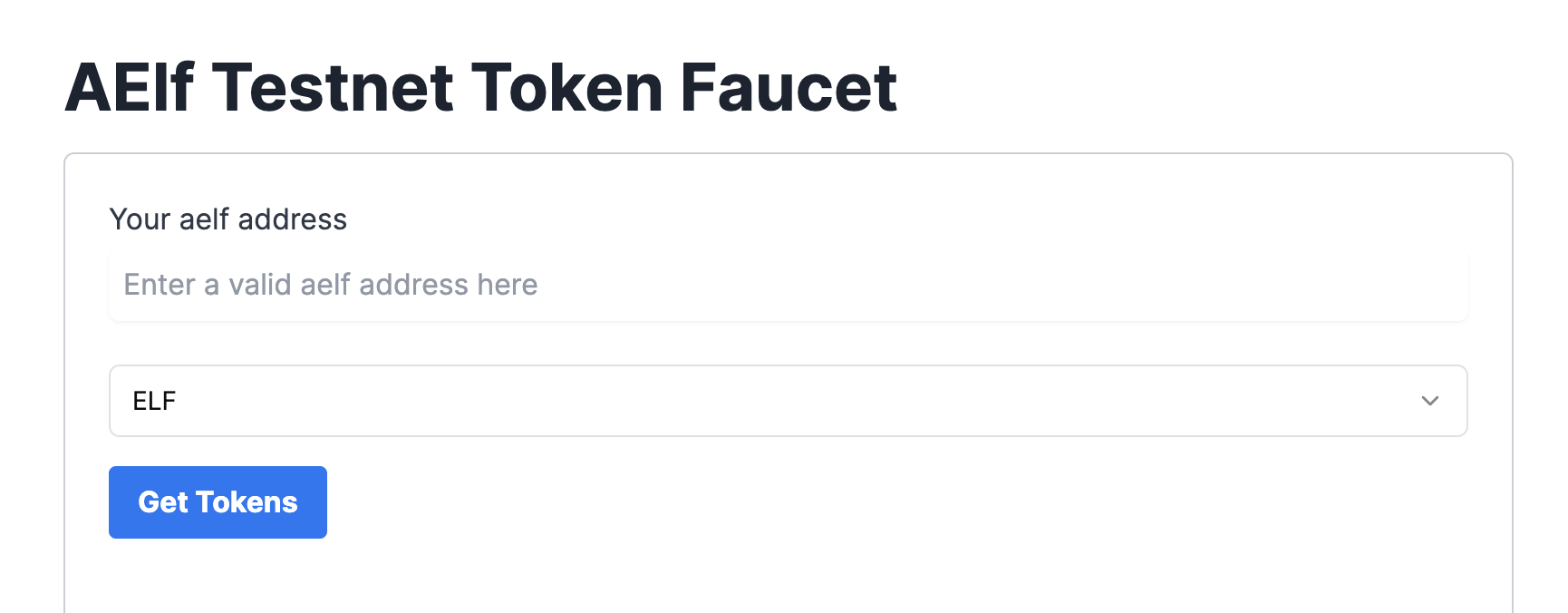
Deploy Smart Contract:
The smart contract needs to be deployed on the chain before users can interact with it.
Run the following command to deploy a contract. Remember to export the path of TicTacToe.dll.patched to CONTRACT_PATH.
- Linux and macOs
- Windows
export CONTRACT_PATH=$(find ~+ . -path "*patched*" | head -n 1)
aelf-deploy -a $WALLET_ADDRESS -p $WALLET_PASSWORD -c $CONTRACT_PATH -e https://tdvw-test-node.aelf.io/
$CONTRACT_PATH = Get-ChildItem -Recurse -Filter "*patched*" | Select-Object -First 1 -ExpandProperty FullName
$env:CONTRACT_PATH = $CONTRACT_PATH
aelf-deploy -a $env:WALLET_ADDRESS -p $env:WALLET_PASSWORD -c $env:CONTRACT_PATH -e https://tdvw-test-node.aelf.io/
-
Please wait for approximately 1 to 2 minutes. If the deployment is successful, it will provide you with the contract address.
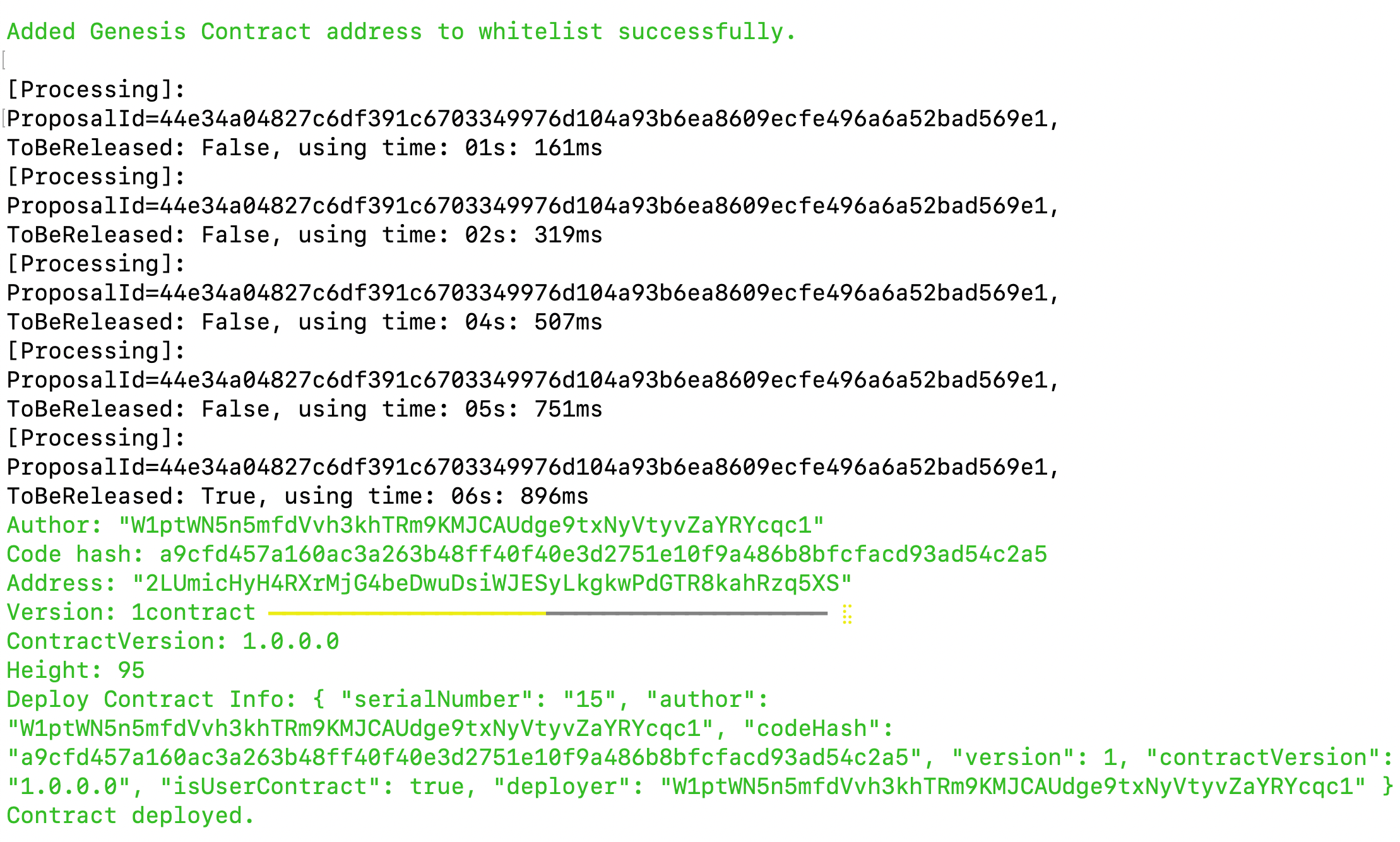
-
Copy the smart contract address from the
addressfield
-
Export your smart contract address:
- Linux and macOs
- Windows
export CONTRACT_ADDRESS="YOUR_SMART_CONTRACT_ADDRESS e.g. 2LUmicHyH4RXrMjG4beDwuDsiWJESyLkgkwPdGTR8kahRzq5XS"
$env:CONTRACT_ADDRESS="YOUR_SMART_CONTRACT_ADDRESS e.g. 2LUmicHyH4RXrMjG4beDwuDsiWJESyLkgkwPdGTR8kahRzq5XS"
ℹ️ Note: You are to copy the smart contract address as we will be referencing it in the next steps!
🎉 You have successfully deployed your Tic-Tac-Toe dApp smart contract on the aelf testnet! In the next steps, we will be building the frontend components that allow us to interact with our deployed smart contract!
Step 4 - Interact with Your Deployed Smart Contract through dApp
Project Setup
Let's start by cloning the frontend project repository from github.
git clone https://github.com/AElfProject/aelf-samples.git
- Next, navigate to the frontend project directory with this command:
cd aelf-samples/tic-tac-toe/2-dapp
- Once you're inside the
2-dappdirectory, open the project with your preferred IDE (e.g., VSCode). You should see the project structure as shown below.
Install necessary libraries
- Run this command in the terminal to install all necessary packages and libraries:
npm install
We are now ready to build the frontend components of our Tic-Tac-Toe dApp.
Configure Portkey Provider & Write Connect Wallet Function
Now, we'll set up our Portkey wallet provider to allow users to connect their Portkey wallets to the dApp and interact with the smart contract. We'll be interacting with the already deployed Tic-Tac-Toe smart contract for this tutorial.
Step 1. Locate the File:
- Go to the
src/hooks/useSmartContract.tsfile.
Step 2. Fetch the Smart Contract:
-
Find the comment
//Step A - Function to fetch a smart contract based on deployed wallet address -
Replace the existing
fetchContractfunction with this updated code:
//Step A - Function to fetch a smart contract based on deployed wallet address
const fetchContract = async () => {
if (!provider) return null;
try {
// 1. get the dAppChain tDVW using provider.getChain
const chain = await provider?.getChain("tDVW");
if (!chain) throw new Error("No chain");
//Address of TicTacToe Smart Contract
//Replace with Address of Deployed Smart Contract
const address = "your_deployed_tic_tac_toe_contract_address";
// 2. get the TicTacToe contract
const contract = chain?.getContract(address);
setSmartContract(contract);
} catch (error) {
console.log(error, "====error");
}
}
ℹ️ Note: You are to replace the address placeholder with your deployed Tic Tac Toe smart contract address from "Deploy Smart Contract" step!
example: Replace with Address of Deployed Smart Contract
const address = "your_deployed_tic_tac_toe_contract_address";
Explanation:
-
fetchContractFunction: This function fetches a smart contract based on the given chain symbol (e.g., "AELF" or "tDVW") and the contract address.- Check Provider : If no provider is available, the function returns null.
- Fetch Chain : The function fetches chain information using the provider.
- Get Contract : It retrieves the smart contract instance from the chain.
AELF represents the mainnet chain and tDVW represents the testnet chain respectively on the aelf blockchain.
Step 3. Initialize and Fetch the Smart Contracts:
-
Find the comment
// Step B - Effect hook to initialize and fetch the smart contract when the provider changes. -
Replace the existing
useEffecthook with this updated code:
// Step B - Effect hook to initialize and fetch the smart contract when the provider changes
useEffect(() => {
fetchContract();
}, [provider]); // Dependency array ensures this runs when the provider changes
Explanation:
useEffectHook : This hook initializes and fetches the smart contracts when the provider changes.- Check Provider : If no provider is available, the function returns null.
- Fetch Contracts : It fetches and sets the smart contracts.
By following these steps, we'll configure the Portkey provider to connect users' wallets to our app and interact with the Tic-Tac-Toe smart contract including Tic-Tac-Toe Game Play related functionalities. This setup will enable our frontend components to perform actions like initializeContract, startGame, makeMove, getGameStatus and getLatestBoard etc.
Configure Connect Wallet Function
Step 1: Locate the File
- Go to the
src/components/layout/header/index.tsxfile.
Step 2: Write the Connect Wallet Function
-
The
header/index.tsxfile is the header of our Tic-Tac-Toe dApp. It allows users to connect their Portkey wallet with the Tic-Tac-Toe dApp. -
Before users can interact with the smart contract, we need to write the
Connect Walletfunction. -
Find the comment
// Step C - Connect Portkey Wallet. -
Replace the existing
connectfunction with this code snippet:
const connect = async (walletProvider?: IPortkeyProvider) => {
// Step C - Connect Portkey Wallet
const accounts = await (walletProvider ? walletProvider : provider)?.request({
method: MethodsBase.REQUEST_ACCOUNTS,
});
const account = accounts?.AELF && accounts?.AELF[0];
if (account) {
setCurrentWalletAddress(account.replace(/^ELF_/, "").replace(/_AELF$/, ""));
setIsConnected(true);
}
!walletProvider && toast.success("Successfully connected");
};
Explanation:
connectFunction : This function connects the user's Portkey wallet with the dApp.- Fetch Accounts : It fetches the wallet accounts using the provider.
- Log Accounts : Logs the accounts to the console for debugging.
- Set Wallet Address : Sets the current wallet address state variable with the fetched account.
In this code, we fetch the Portkey wallet account using the provider and update the wallet address state variable. An alert notifies the user that their wallet is successfully connected.
With the connect wallet function defined, we're ready to write the remaining functions in the next steps.
Check Contract Initialization
Step 1: Locate the File
- Go to the
src/pages/home/index.tsxfile. This file contains all the functionalities like showinitializeContract,startGame,makeMove,getGameStatusandgetLatestBoardetc.
Step 2: Prepare a Function to Check Whether the Contract is Initialized or not
-
Scroll down to find the comment
// step 1 - Check If Contract is Initialized or not. -
Replace the existing
checkIsContractInitializedfunction with this code snippet:
// step 1 - Check If Contract is Initialized or not
const checkIsContractInitialized = async () => {
const result = await smartContract?.callViewMethod("GetInitialStatus", ""); // Call the GetInitialStatus method which is present on Smart Contract
setIsContractInitialized(result?.data?.value); // Expect value True if it's Initialized otherwise NULL if it's not
};
Initialize Contract
-
Scroll down to find the comment
// step 2 - Initialize the smart contract. -
Replace the existing
checkIsContractInitializedfunction with this code snippet:
// step 2 - Initialize the smart contract
const initializeContract = async () => {
let initializeLoadingId;
try {
// Start Loading
initializeLoadingId = toast.loading("Initializing a Contract..");
await smartContract?.callSendMethod(
"Initialize", // Function Name
currentWalletAddress as string, // User Wallet Address
{} // No Arguments
);
// Update Loading Message with Success
toast.update(initializeLoadingId, {
render: "Contract Successfully Initialized",
type: "success",
isLoading: false,
});
return;
} catch (error: any) {
// Update Loading Message with Error
toast.update(initializeLoadingId as Id, {
render: error.message,
type: "error",
isLoading: false,
});
return;
} finally {
// Remove Loading Message
removeNotification(initializeLoadingId as Id);
}
};
Fetch Game Status
-
Write the function to fetch the game status.
-
Find the comment
// step 3 - Fetch Game Status functionon same file. -
Replace the existing
getGameStatusfunction with this code snippet:
// step 3 - Fetch Game Status function
const getGameStatus = async (isFirstCheck?: boolean) => {
try {
const result = await smartContract?.callViewMethod("GetGameStatus", "");
console.log("result", result);
if (result?.data.status === "finished") {
if (!isFirstCheck) {
toast.success(`${result.data.winner} is Winner 🥳 🏆`);
setWinner(result.data.winner);
}
} else {
setIsStarted(true);
getLatestBoard();
}
} catch (error: any) {
toast.error(error.message);
} finally {
setLoading(false);
return;
}
};
What This Function Does:
- Calls Smart Contract Method : It interacts with the blockchain smart contract to fetch the game status using
getGameStatusFunction.
Next, we'll write the Fetch Board Data function.
Fetch Board Data
Write the function to fetch the board data.
-
Scroll down to find the comment
// step 4 - Fetch Latest Board Data from the Contract. -
Replace the existing
getLatestBoardfunction with this code snippet:
// step 4 - Fetch Latest Board Data from the Contract
const getLatestBoard = async () => {
try {
const result = await smartContract?.callViewMethod("GetBoard", "");
const arrayData = result?.data.rows
.map((rowData: any) =>
rowData.split(",").map((item: string) => (item === "" ? null : item))
)
.flat();
getNextTurn(arrayData);
setBoard(arrayData);
} catch (error: any) {
toast.error(error.message);
} finally {
return;
}
};
What This Function Does:
-
Calls Smart Contract Method : It interacts with the blockchain smart contract to fetch the latest board data using
getLatestBoardFunction. -
Convert Respnose Data into Array : It converts object of the response data to an array to adjust every move into the UI board.
Next, we'll write the Start Game function.
Start Game
Write the Function to start the Tic-Tac-Toe game.
-
Scroll down to find the comment
// step 5 - Start Game function. -
Replace the existing
startGamefunction with the following code snippet:
// step 5 - Start Game function
const startGame = async () => {
try {
if (!currentWalletAddress) {
toast.info("Please Login First");
return;
}
if (!isContractInitialized) {
await initializeContract();
}
await smartContract?.callSendMethod("StartGame", currentWalletAddress);
setTurnType("X");
setIsStarted(true);
getLatestBoard();
toast.success("Game Has been Started ✅");
} catch (error: any) {
toast.error(error.message);
}
};
What This Function Does:
- Calls Smart Contract Method : It interacts with the blockchain smart contract to start the game by using the
startGameFunction.
Next, we'll write the Make the Move function.
Perform the Move
Write a function to make the move.
-
Scroll down to find the comment
// step 6 - Make the Move Function. -
Replace the existing
makeMovefunction with this code snippet:
// step 6 - Make the Move Function
const makeMove = async (x: number, y: number) => {
try {
if (!currentWalletAddress) {
toast.info("Please Login First");
return;
}
const moveIndex = getIndexFromPosition(x, y);
setMoveLoadingIndex(moveIndex as number);
const params = {
x: x,
y: y,
};
await smartContract?.callSendMethod(
"MakeMove",
currentWalletAddress,
params
);
// toast.success("Your Move Submitted");
changeTurn();
await getLatestBoard();
await getGameStatus();
} catch (error: any) {
toast.error(error.message);
} finally {
}
};
What This Function Does:
- Calls Smart Contract Method : It interacts with the blockchain smart contract to make the move by an input from a player using
makeMovefunction by passing X and Y value of the Board.
Now that we've written all the necessary frontend functions and components for play the Tic-Tac-Toe page, we're ready to run the Tic-Tac-Toe dApp application in the next step.
Run Application
In this step, we will run the Tic-Tac-Toe dApp application.
- To begin, run the following command on your terminal.
npm run dev
Note: Ensure that you are running this command under the tic-tac-toe/2-dapp folder.
-
You should observe the following as shown below.

-
Upon clicking on the localhost URL, you should be directed to the Tic-Tac-Toe dApp landing page as shown below.
If you are developing and testing this with github codespace, you can use port forward to test the web server that is running in codespace, here is the link on how to use port forward for codespace https://docs.github.com/en/codespaces/developing-in-a-codespace/forwarding-ports-in-your-codespace
-
Usually codespaces automatically forward ports, you should see a pop-up message at the bottom right of your codespace browser window as shown in the diagram below:

-
Click the link to open the Tic-Tac-Toe dApp in the browser.

Create Portkey Wallet
Portkey is the first AA wallet from aelf's ecosystem, migrating users, developers and projects from Web2 to Web3 with DID solution.
Users can swiftly log into Portkey via their Web2 social info with no private keys or mnemonics required. Underpinned by social recovery and decentralized guardian design, Portkey safeguards users' assets from centralized control and theft. Portkey has a unique payment delegation mechanism which enables interested parties to function as delegatees to pay for user activities on users' behalf. This means that users can create accounts for free and fees for other usages may also be covered in Portkey.
Portkey also provides crypto on/off-ramp services, allowing users to exchange fiat with crypto freely. It supports the storage and management of various digital assets such as tokens, NFTs, etc. The compatibility with multi-chains and seamless connection to all kinds of DApps makes Portkey a great way to enter the world of Web3.
With DID solution as its core, Portkey provides both Portkey Wallet and Portkey SDKs.
For more information, you may visit the official documentation for Portkey at https://doc.portkey.finance/.
- Download the Chrome extension for Portkey from https://chromewebstore.google.com/detail/portkey-wallet/iglbgmakmggfkoidiagnhknlndljlolb.
The Portkey extension supports Chrome browser only (for now). Please ensure that you are using Chrome browser. You may download Chrome from https://www.google.com/intl/en_sg/chrome/.
-
Once you have downloaded the extension, you should see the following on your browser as shown below.
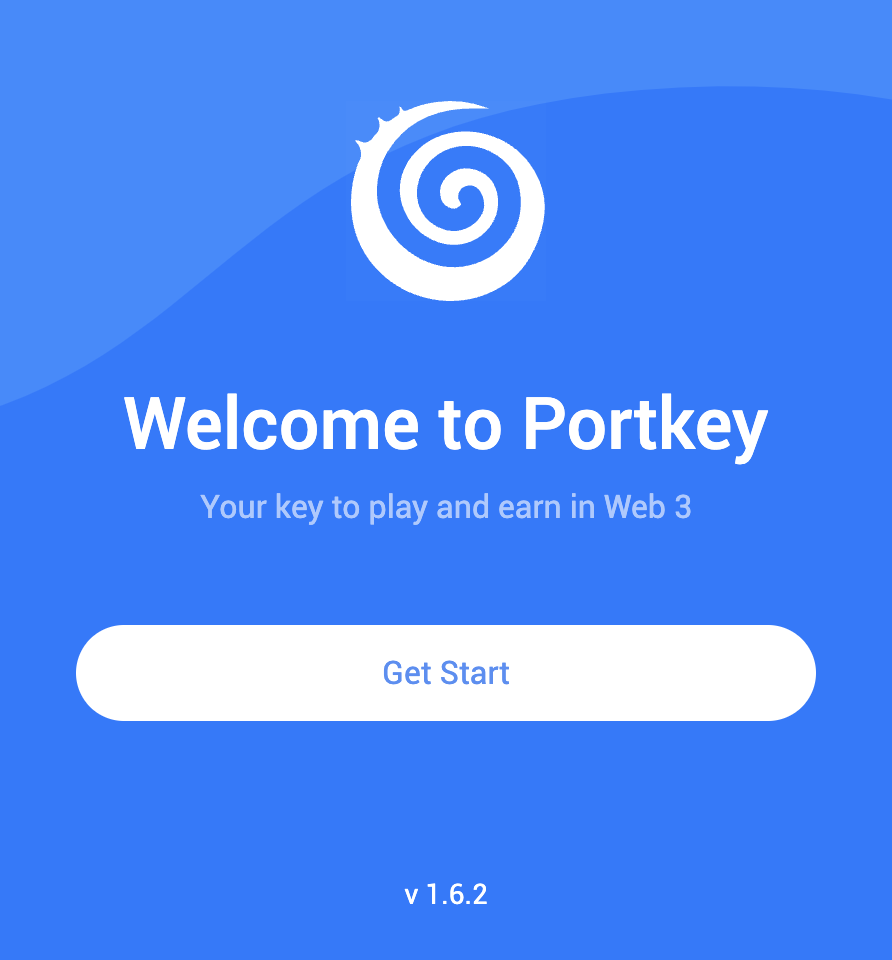
-
Click on
Get Startand you should see the following interface as shown below.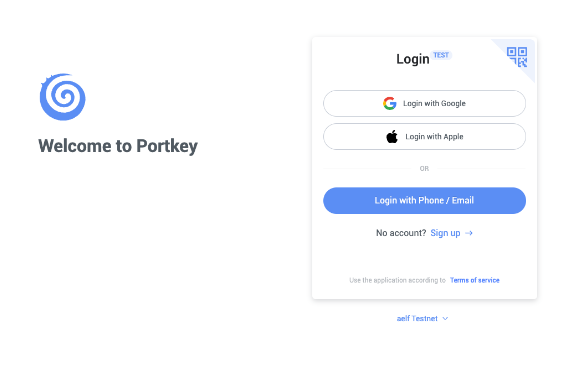
Sign up
-
Switch to aelf Testnet network by selecting it:
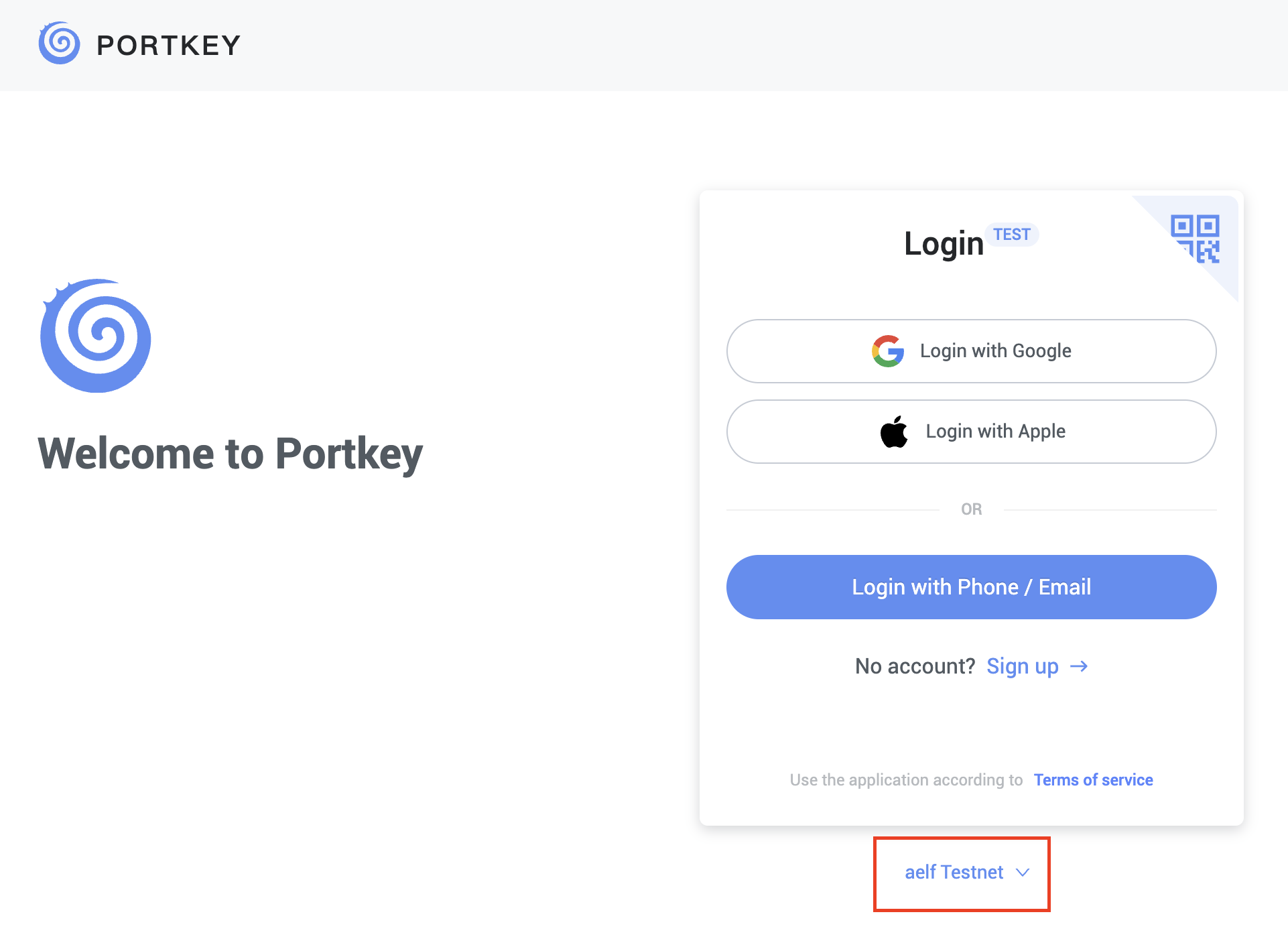
Please make sure you are using aelf Testnet in order to be able to receive your testnet tokens from the Faucet.
-
Proceed to sign up with a Google Account or your preferred login method and complete the necessary accounts creation prompts and you should observe the following interface once you have signed up.
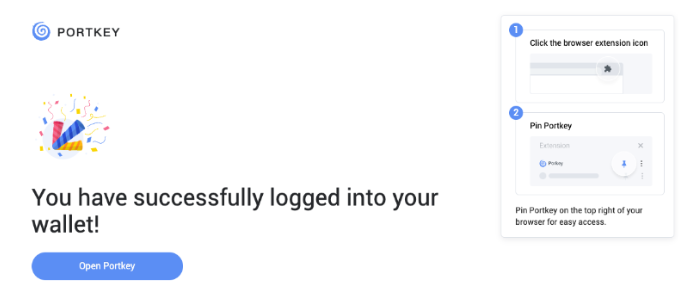
With that, you have successfully created your very first Portkey wallet within seconds. How easy was that?
It is highly recommended to pin the Portkey wallet extension for easier access and navigation to your Portkey wallet!
-
Next, click on ‘Open Portkey’ and you should now observe the following as shown below.

Connect Portkey Wallet
-
Click on "Connect Wallet" to connect your Portkey wallet.
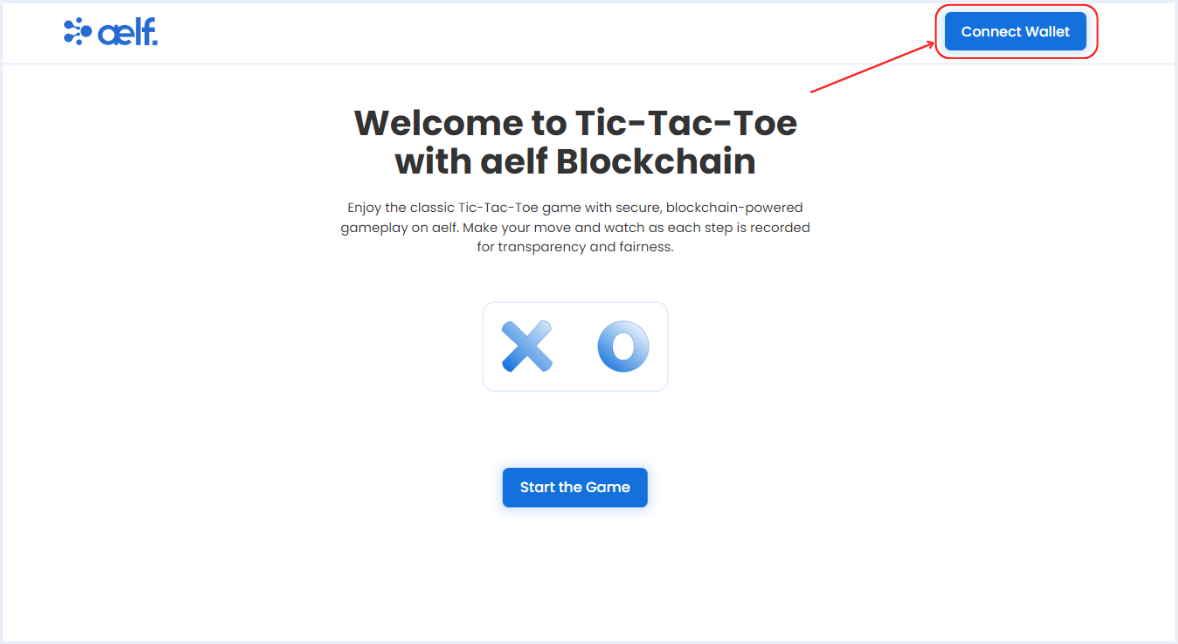
-
The button will change to "Your Wallet Address" when the connection is successful.
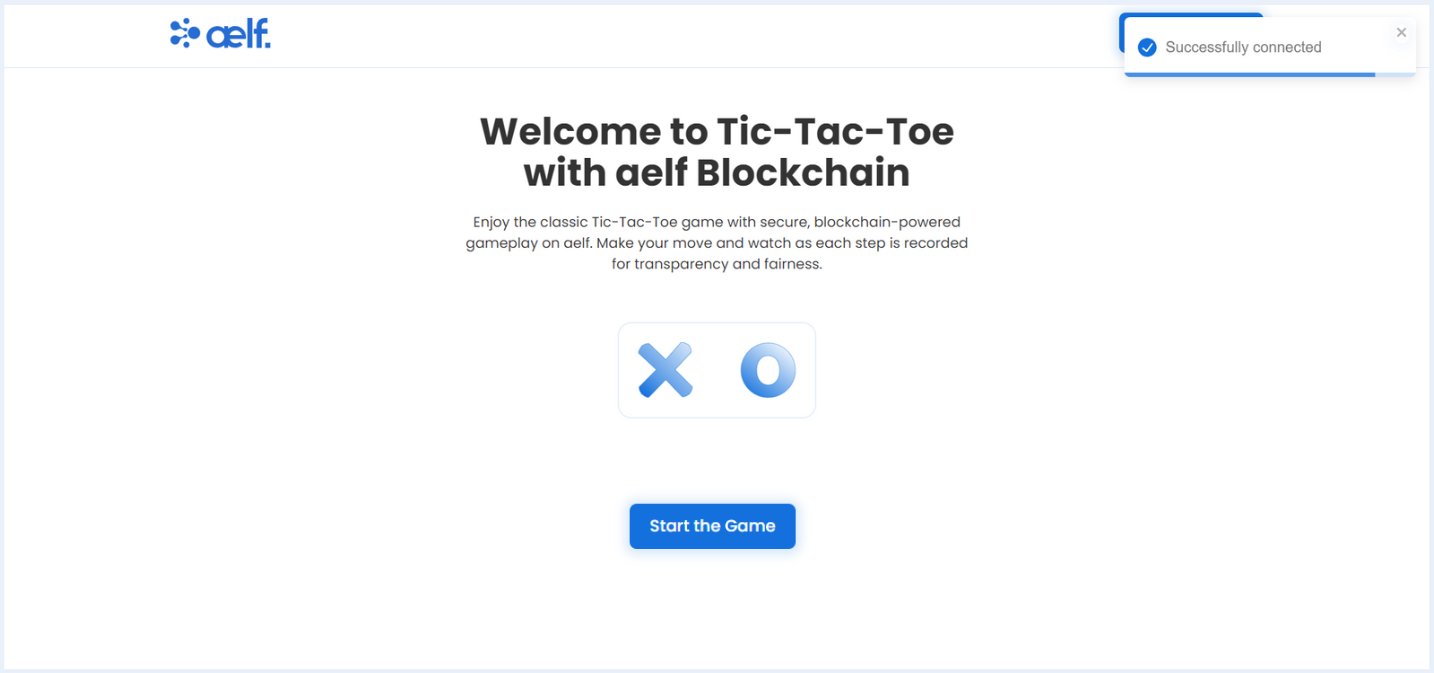
Start The Game
-
Click on "Start The Game" button to Start The Tic Tac Toe Game.

-
You will receive a transaction request on your portkey wallet to Sign the transaction.

-
Click on Sign the transaction.
-
After the transaction is successfully processed, your game will start ✅.

As we have Started the Game successfully, let's start to perform the moves and enjoy the game.
Perform the Move
Let's start to make the moves and play the game.
Your first move will always be "X" as shown in the picture below.
-
Click on the first square of the board, as shown in the picture below.
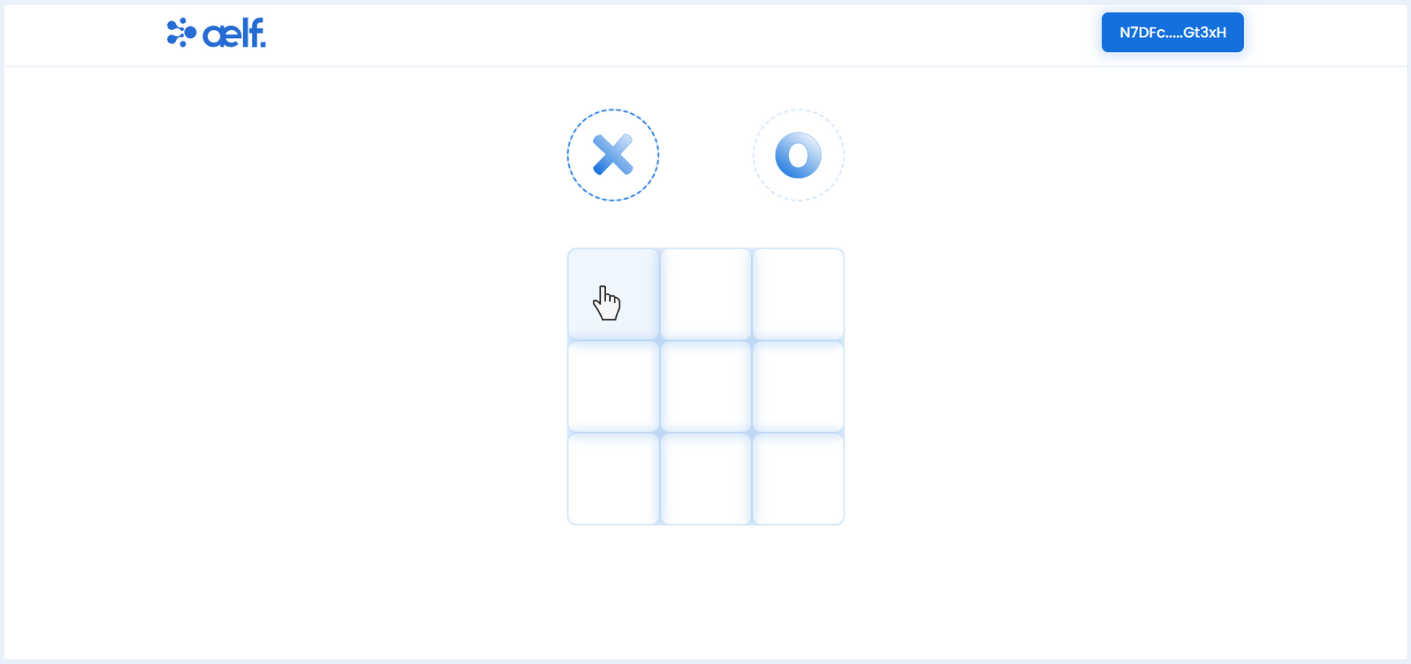
-
You will receive a transaction request on your Portkey wallet to Sign for making the move.

-
After the transaction is successfully processed, your first move will be submitted to blockchain ✅.
-
Now it's turn of move by the opponent and the move sign will change from "X" to "O". Your active turn is "O" now, as shown in the picture below.
-
Click on the middle square of the board for "O", as shown in the picture below.

-
You will receive a transaction request on your Portkey wallet to Sign for the second move.
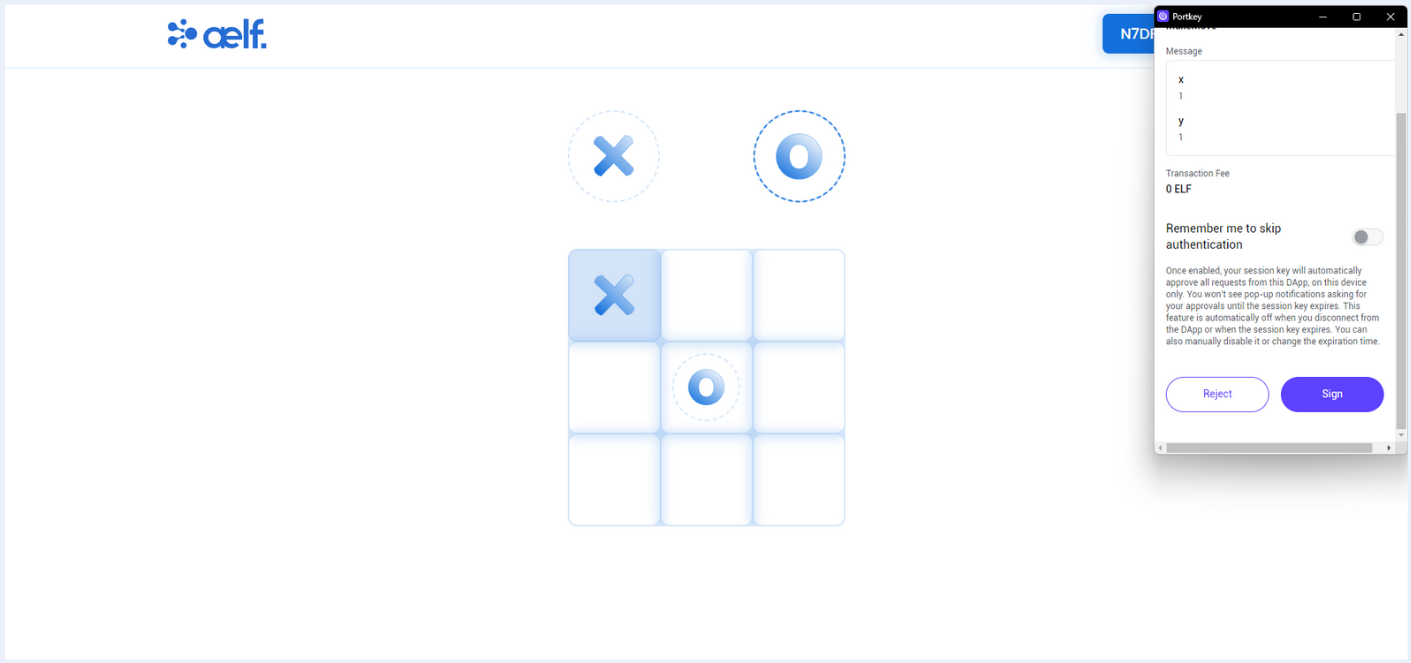
-
Click on Sign the transaction.
-
After the transaction is successfully processed, your second move will be submitted to the blockchain ✅.
-
Now you can continue making other moves as demonstrated above.
-
After winning the game, you will see this winning screen with the corresponding move (X or O).
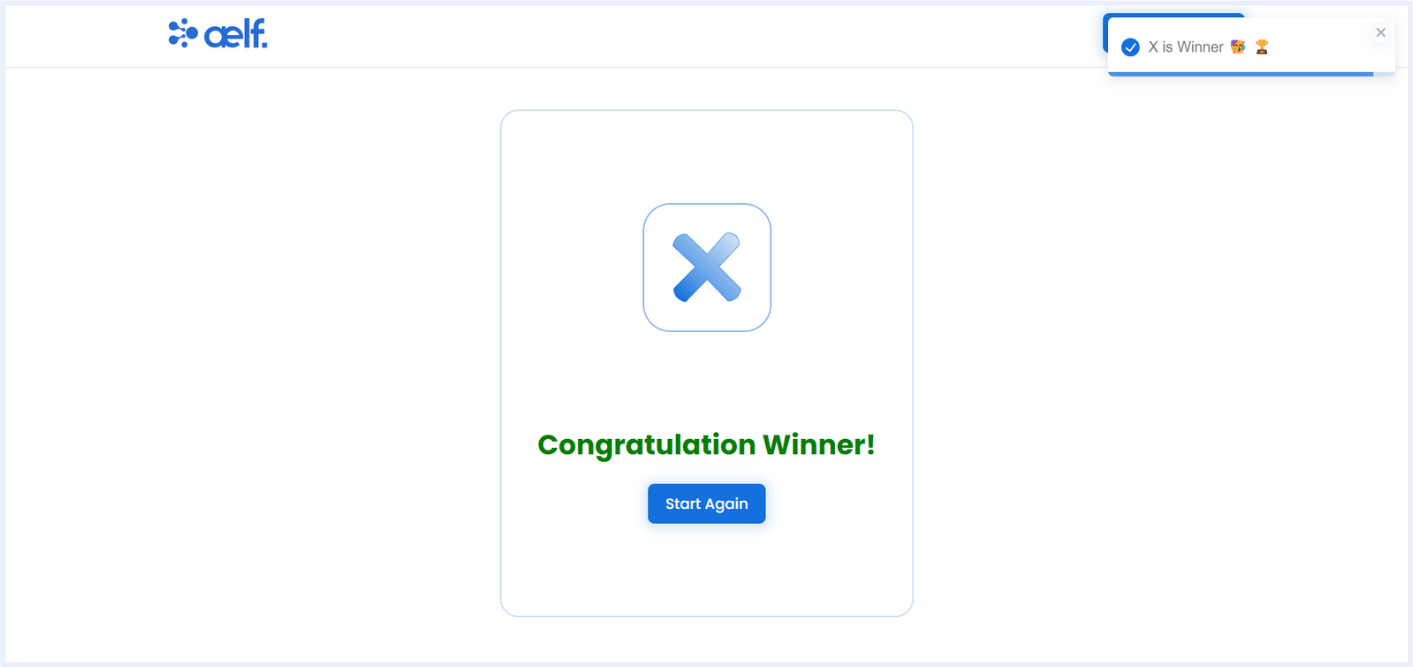
-
Click on the Start Again button to continue playing the Tic-Tac-Toe game with aelf blockchain. Enjoy!
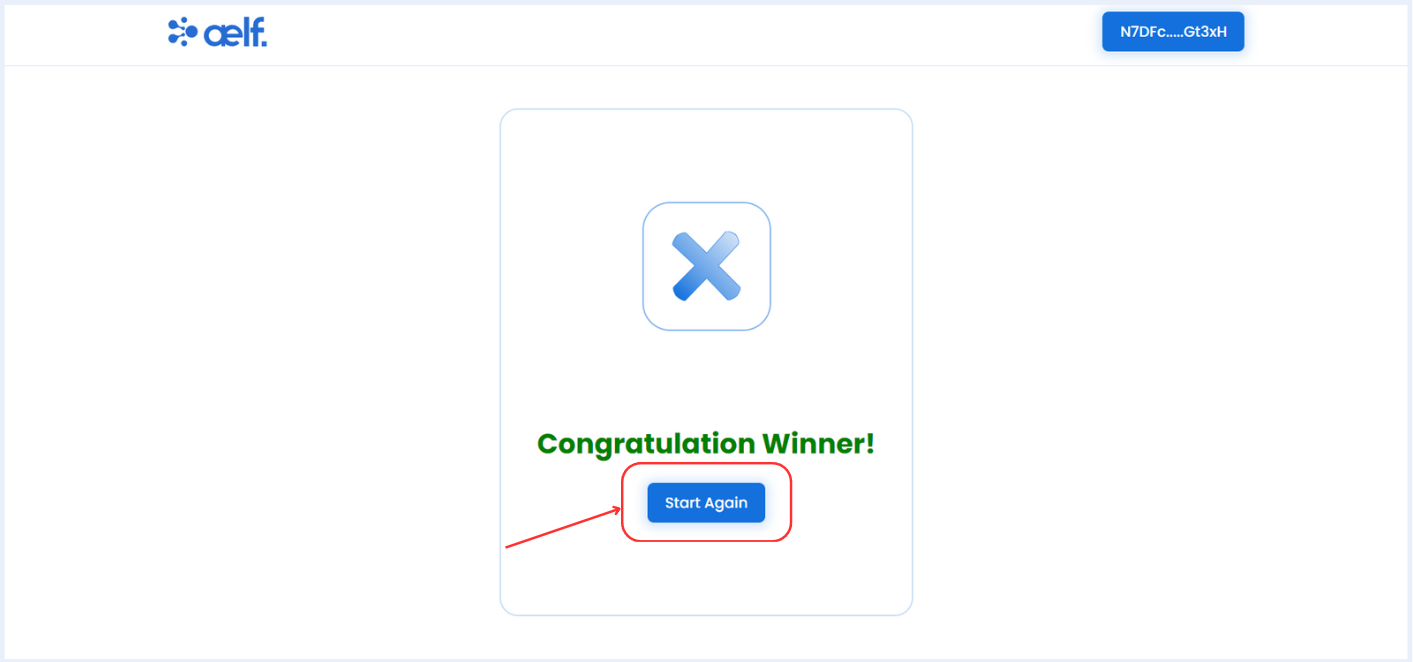
-
You will be redirected again to the Welcome screen of the Game.
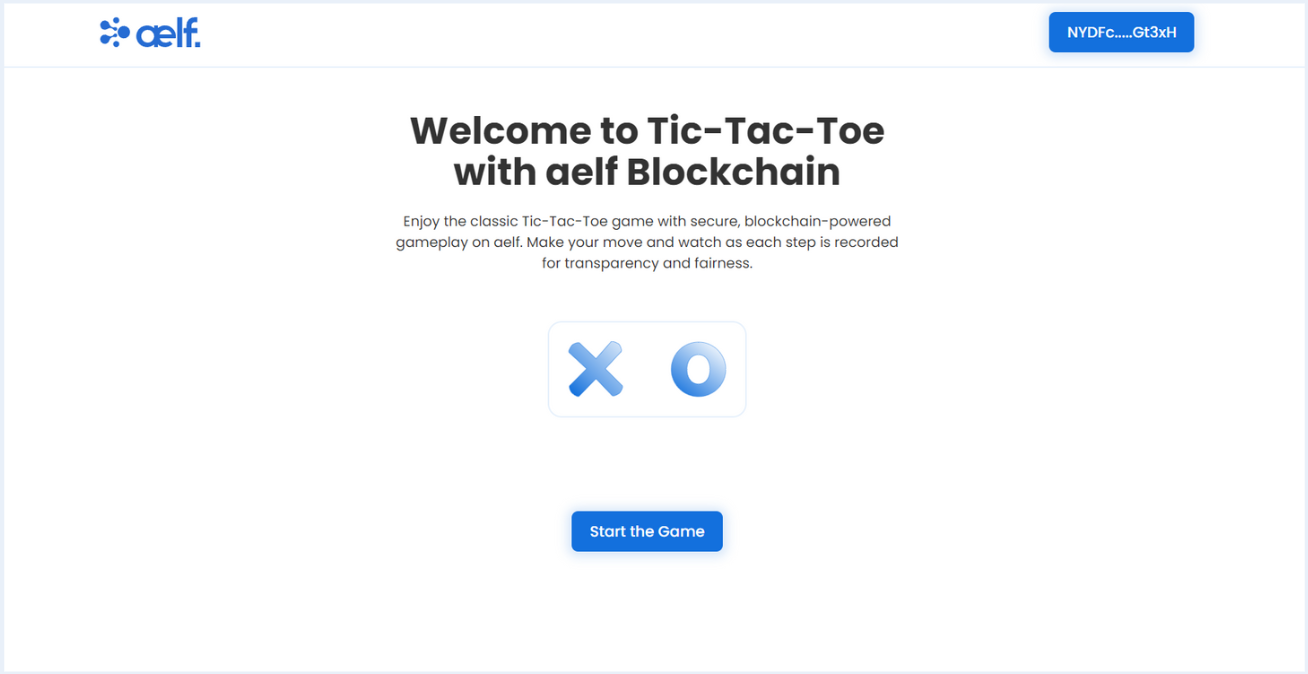
🎉 Congratulations Learners! You have successfully built your Tic-Tac-Toe dApp with aelf Blockchain.
🎯 Conclusion
🎉 Congratulations on successfully completing the Tic Tac Toe dApp tutorial! 🎉 You've achieved significant milestones, from setting up your development environment to deploying and interacting with your Tic-Tac-Toe smart contract on the aelf blockchain. 🌟
📚 What You've Learned
Throughout this tutorial, you've mastered:
-
🛠️ Setting Up Your Development Environment: You equipped your workspace by installing and configuring all the necessary tools to get your smart contract project off the ground.
-
💻 Developing Your Smart Contract: You built the core logic of your Tic Tac Toe game, writing and compiling the smart contract that manages game states, moves, and outcomes.
-
🚀 Deploying the Smart Contract: You successfully deployed your Tic Tac Toe smart contract to the aelf blockchain, making it live and ready for gameplay.
-
🔧 Interacting with Your Deployed Smart Contract through the dApp: You connected your frontend to the blockchain, configured the Portkey provider, and implemented essential functions like wallet connectivity, game initialization, and move management.
🔍 Final Output
By now, you should have:
-
📜 A deployed Tic-Tac-Toe smart contract that governs the game's rules and manages players' moves on the blockchain.
-
💻 A fully functional Tic-Tac-Toe dApp, allowing users to connect their wallets, start a game, make moves, and determine the winner, all in a decentralized manner.
➡️ What's Next?
With the foundation laid, consider advancing your Tic-Tac-Toe dApp with more sophisticated features:
-
📈 Enhancing Game Logic: Add more features like AI opponents, multiplayer functionality, or scoring systems to make the game more engaging.
-
🔒 Improving Security: Secure your game by applying best practices in smart contract security to protect users' data and gameplay integrity.
-
🌍 Exploring Cross-Chain Capabilities: Expand your dApp’s reach by exploring aelf’s cross-chain interoperability, enabling interactions with other blockchains.
Blockchain technology and decentralized applications offer limitless possibilities. With your Tic-Tac-Toe dApp, you're now poised to continue innovating and exploring new horizons with aelf. 🚀
Happy coding and expanding your Tic-Tac-Toe dApp! 😊